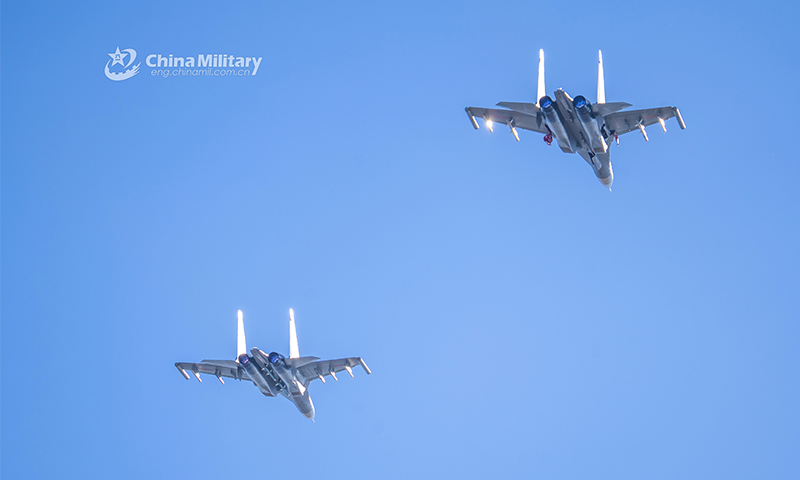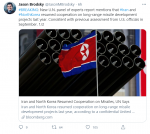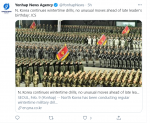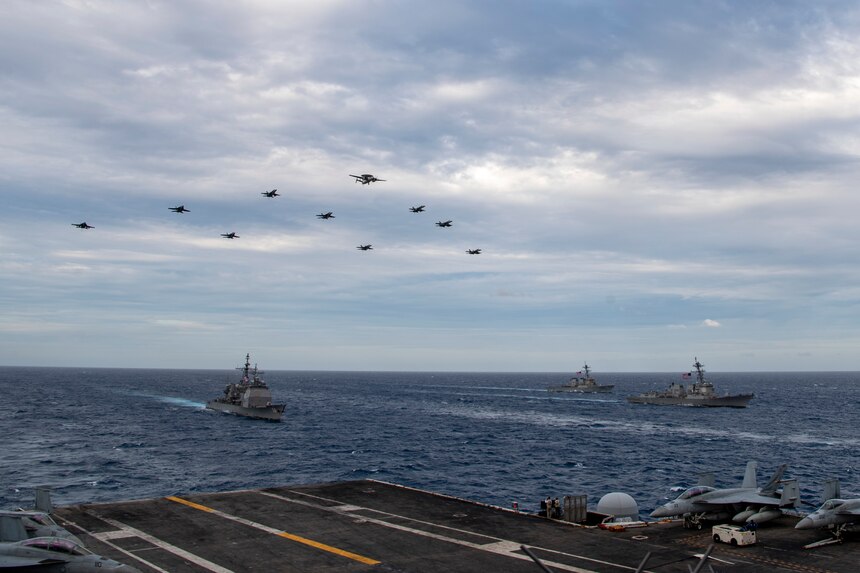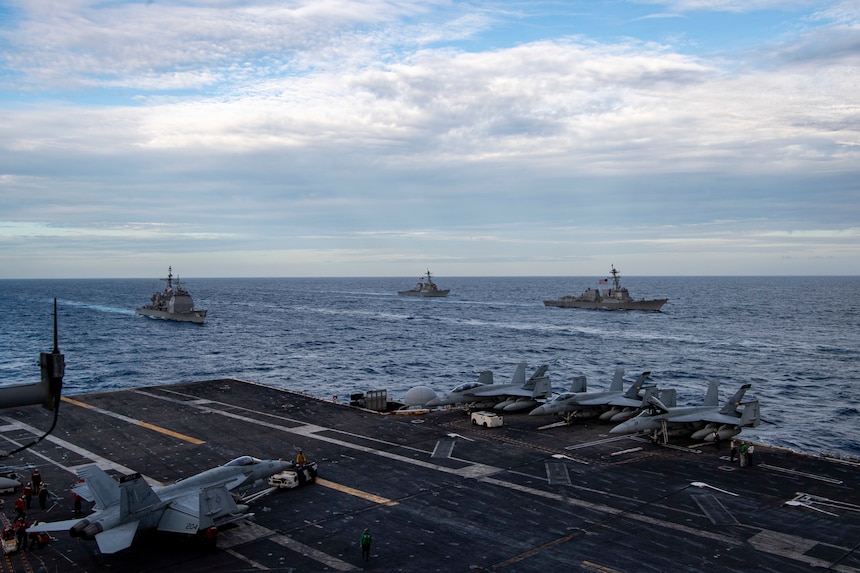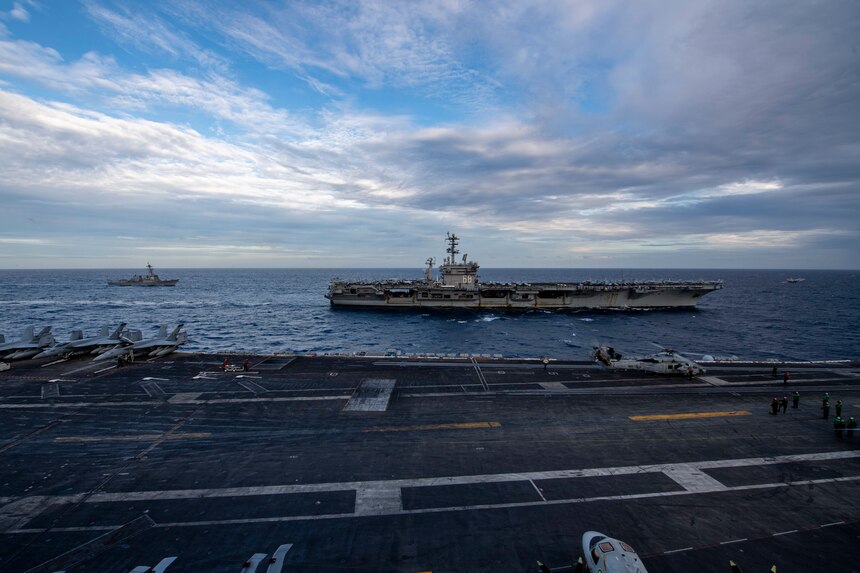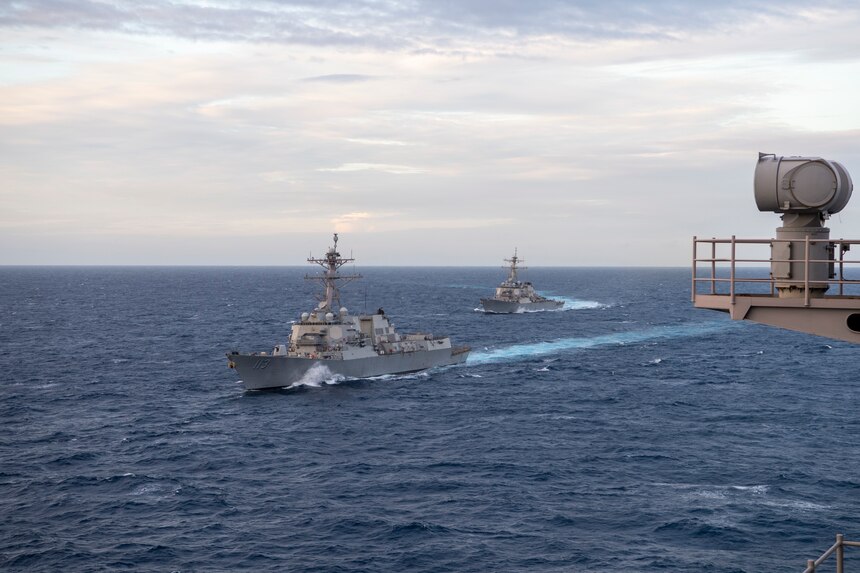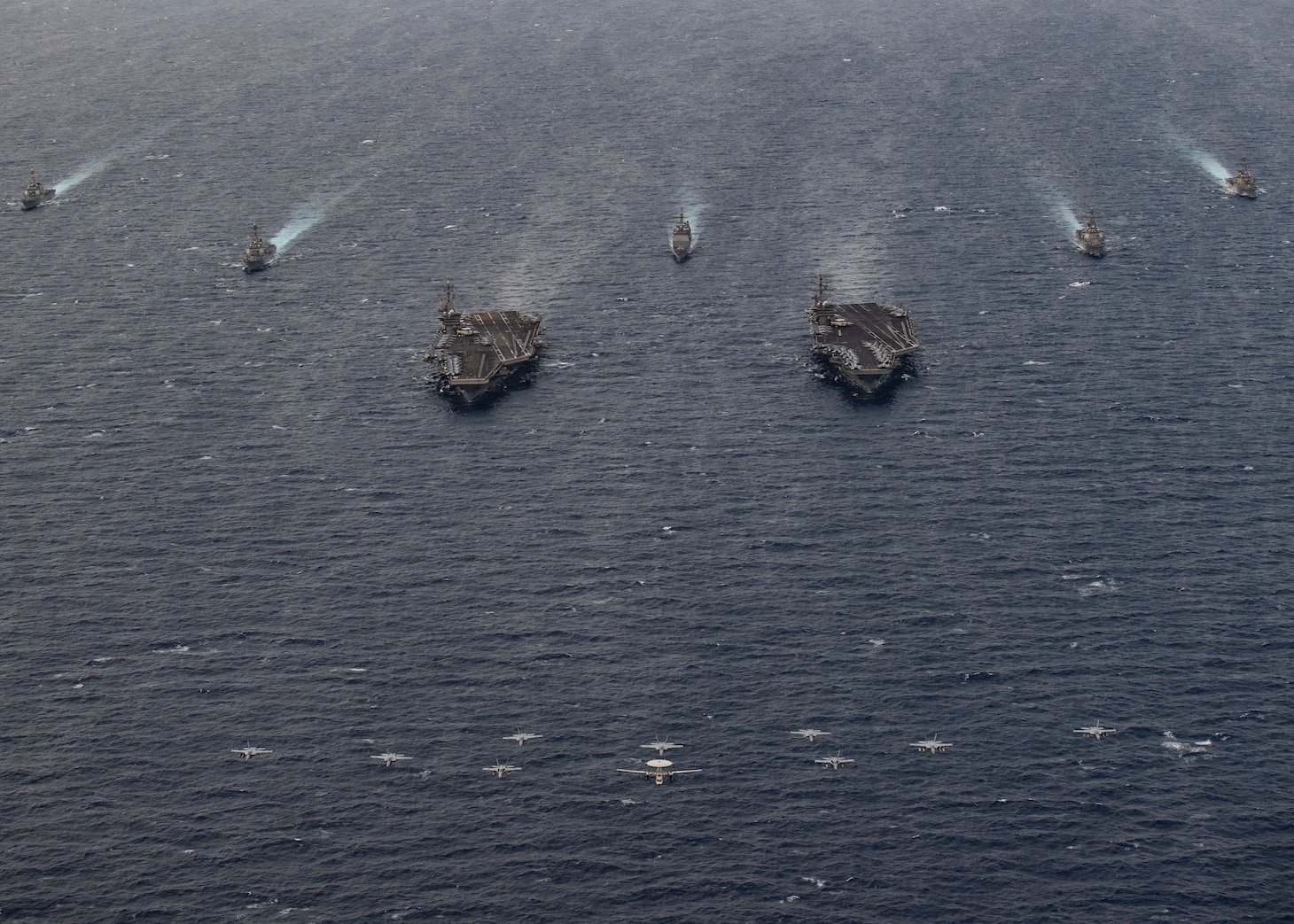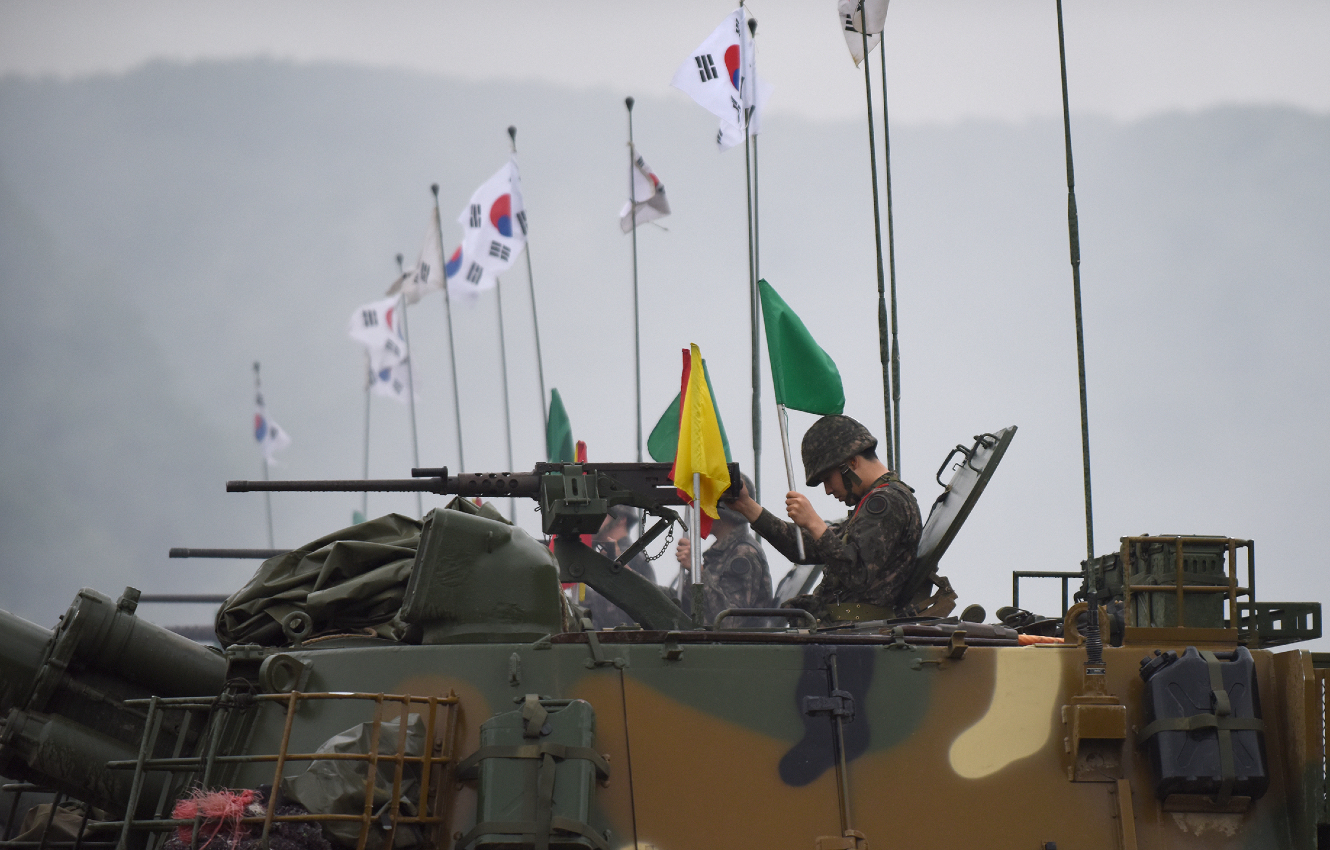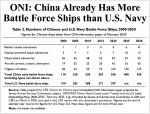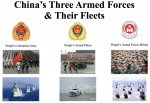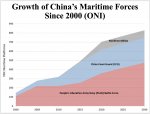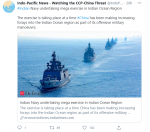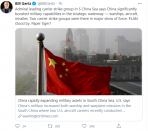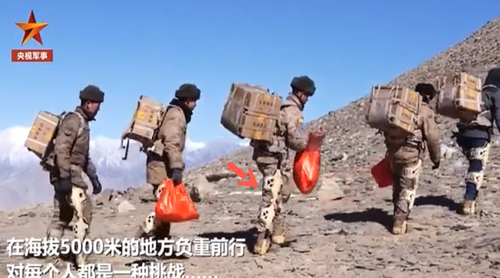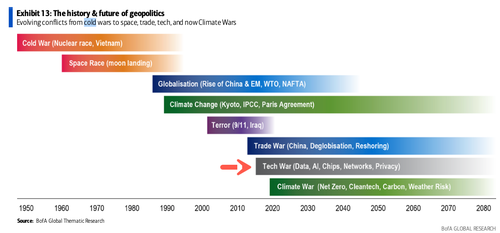danielboon
TB Fanatic
US stages joint Guam drill with Australia and Japan as it looks for ways to make it harder for China to ‘wipe out’ air forces with missile strikes
Published: 10:00pm, 7 Feb, 2021

US, Japanese and Australian warplanes pictured during last year’s joint exercise on Guam. Photo: Handout
The United States is conducting a joint exercise with Australia and Japan on Guam as it seeks to counter its
increasing vulnerability to attack
from Russia or China.
The joint exercise at the Andersen Air Force Base, known as Cope North 2021, started on Wednesday and will run until February 19 and will see the base hosting F-35A joint strike fighters for the first time.
The exercise kicks off with an exercise designed to improve the three countries’ ability to carry out humanitarian operations in response to a natural disaster in the region, according to a statement from the US air force in the Pacific.
It also includes air combat drills designed to improve their flexibility and common communications ability.
China’s Hollywood-style Guam attack video dismissed as propaganda
25 Sep 2020

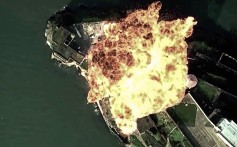
Air Force magazine reported that one commander had said that one aim was to improve the forces’ ability to operate from small, rough airfields with limited facilities – also known as austere airfields– a move analysts said was designed to make it harder to “wipe out” US air power with missile attacks on major bases.
“China and Russia can increasingly hold overseas US bases at risk. To adapt, the air force must evolve from its dependence on well-established airfields or risk building an operational edge,” Brigadier General Jeremy Sloane, commander of the 36th Wing at Andersen, told a virtual event hosted by the Air Force Association.
“While the service can overcome some disadvantage with long-range bombers, a war in which missiles knock out American air bases and prevent the ability to launch and recover short-range fighter jets is unlikely to end well.”
Andersen’s Northwest Field is less than 2,400 metres (8,000 feet long), with limited taxiway and hangar space, and no permanent airfield controls. It is currently used by helicopters and C-130 Hercules transport aircraft.
Footage reportedly shows test of China’s missile interceptor
Footage reportedly shows test of China’s missile interceptor
Song Zhongping, a military analyst and former People’s Liberation Army instructor, said the “the exercise is to ensure the connection between the Guam base and other bases” if it comes under attack from the Chinese military.
“In addition, the fourth-generation aircraft and the fifth-generation aircraft are connected to form this mutual protection plan to ensure that these bases can survive on the one hand and continue to perform effective counterattacks on the other”.
Song said the inclusion of Japan and Australia in the exercise is to build a strategy with its allies to counter China and it could use bases in those countries to respond to any attack.
Defence analysts believe that the PLA air force is capable of penetrating the first island chain – a series of archipelagos in the Pacific stretching from the Kuril Islands, through Japan and on to the Philippines.
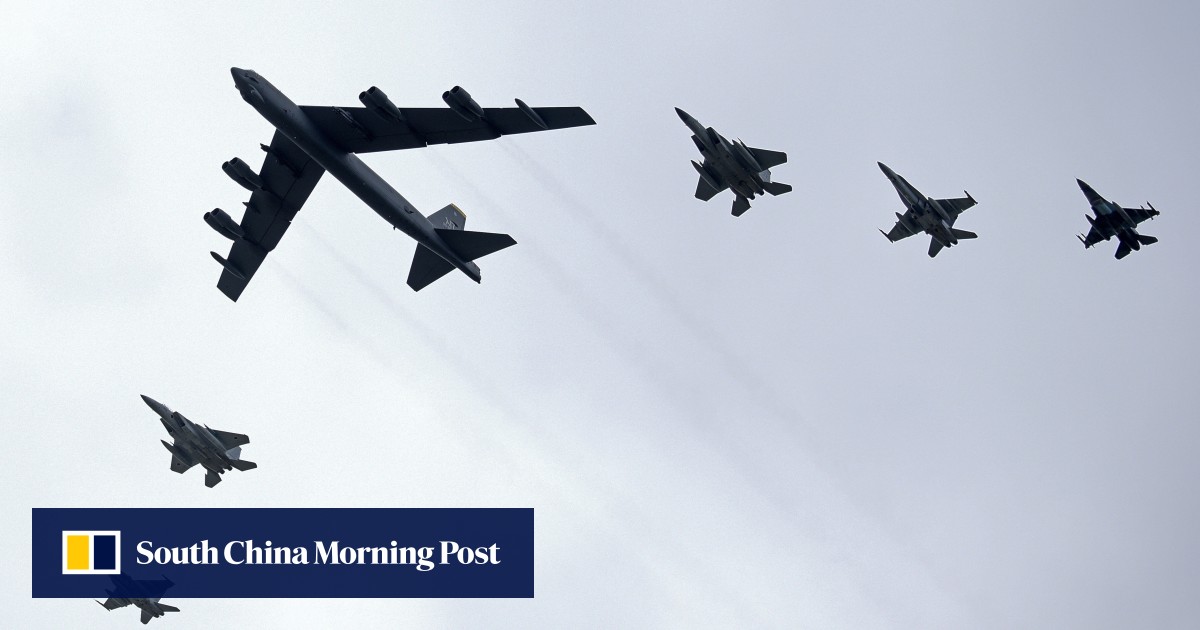
 www.scmp.com
www.scmp.com
- Drills will include air combat exercises designed to improve ability to use smaller airfields in case major bases come under attack
- US commanders believe China and Russia pose a growing threat to its military facilities
Published: 10:00pm, 7 Feb, 2021

US, Japanese and Australian warplanes pictured during last year’s joint exercise on Guam. Photo: Handout
The United States is conducting a joint exercise with Australia and Japan on Guam as it seeks to counter its
increasing vulnerability to attack
from Russia or China.
The joint exercise at the Andersen Air Force Base, known as Cope North 2021, started on Wednesday and will run until February 19 and will see the base hosting F-35A joint strike fighters for the first time.
The exercise kicks off with an exercise designed to improve the three countries’ ability to carry out humanitarian operations in response to a natural disaster in the region, according to a statement from the US air force in the Pacific.
It also includes air combat drills designed to improve their flexibility and common communications ability.
China’s Hollywood-style Guam attack video dismissed as propaganda
25 Sep 2020

Air Force magazine reported that one commander had said that one aim was to improve the forces’ ability to operate from small, rough airfields with limited facilities – also known as austere airfields– a move analysts said was designed to make it harder to “wipe out” US air power with missile attacks on major bases.
“China and Russia can increasingly hold overseas US bases at risk. To adapt, the air force must evolve from its dependence on well-established airfields or risk building an operational edge,” Brigadier General Jeremy Sloane, commander of the 36th Wing at Andersen, told a virtual event hosted by the Air Force Association.
“While the service can overcome some disadvantage with long-range bombers, a war in which missiles knock out American air bases and prevent the ability to launch and recover short-range fighter jets is unlikely to end well.”
Andersen’s Northwest Field is less than 2,400 metres (8,000 feet long), with limited taxiway and hangar space, and no permanent airfield controls. It is currently used by helicopters and C-130 Hercules transport aircraft.
Footage reportedly shows test of China’s missile interceptor
Footage reportedly shows test of China’s missile interceptor
Song Zhongping, a military analyst and former People’s Liberation Army instructor, said the “the exercise is to ensure the connection between the Guam base and other bases” if it comes under attack from the Chinese military.
“In addition, the fourth-generation aircraft and the fifth-generation aircraft are connected to form this mutual protection plan to ensure that these bases can survive on the one hand and continue to perform effective counterattacks on the other”.
Song said the inclusion of Japan and Australia in the exercise is to build a strategy with its allies to counter China and it could use bases in those countries to respond to any attack.
Defence analysts believe that the PLA air force is capable of penetrating the first island chain – a series of archipelagos in the Pacific stretching from the Kuril Islands, through Japan and on to the Philippines.

US stages drill with allies as it seeks to counter Chinese missile threat
Drills will include air combat exercises designed to improve ability to use smaller airfields in case its main bases come under attack.

